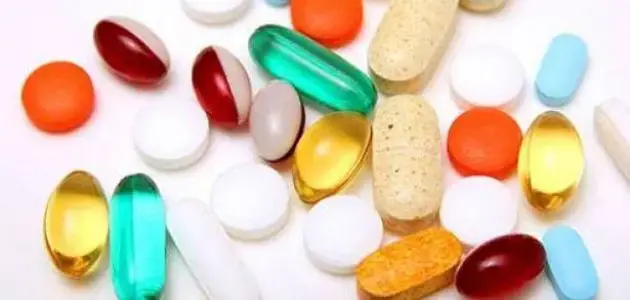Here are some of the top natural food sources rich in folic acid (also known as folate):
Legumes
Legumes, like beans, peas, and lentils, are packed with folate. For example, one cup of lentils has about 358 micrograms of folate, while the same amount of edamame packs around 482 micrograms. Besides folate, legumes are also great sources of protein, fiber, antioxidants, and minerals like potassium, magnesium, and iron.
Asparagus
Asparagus is loaded with vitamins and minerals, including folate. One cup of cooked asparagus provides about 286 micrograms of folate. It’s also known for its antioxidant, anti-inflammatory, and antibacterial properties, plus it’s a fantastic source of fiber that supports heart health.
Eggs
Eggs offer many important nutrients like protein, selenium, vitamins B2 and B12, and antioxidants — along with folate. One large egg contains around 23.5 micrograms of folate.
Leafy Greens
Leafy greens like spinach, kale, and arugula are low in calories but high in fiber, vitamins A and K, and folate. For example, one cup of spinach provides about 263 micrograms of folate.
Broccoli
Broccoli contains a variety of important nutrients, including manganese and vitamins A, C, and K. One cup of cooked broccoli delivers about 168.5 micrograms of folate.
Seeds and Nuts
Nuts and seeds are rich in protein, vitamins, minerals, and fiber. While folate levels vary by type, adding more nuts and seeds to your diet can help meet daily folate needs. For instance, 1 ounce (28 grams) of walnuts has about 28 micrograms of folate, and the same amount of flaxseeds offers around 24 micrograms.
Wheat Germ
Though often removed during processing, wheat germ is loaded with vitamins, minerals, antioxidants, and folate. A 1-ounce serving provides nearly 79 micrograms of folate and 16% of your daily fiber needs, which helps with digestion and blood sugar control.
Beef Liver
Just one 3-ounce (85 grams) serving of beef liver can cover your needs for vitamin A, B12, copper, and protein. It also has about 210.6 micrograms of folate per serving.
Beets
Beets are a great source of potassium, manganese, vitamin C, and nitrates. One cup of beets offers around 148 micrograms of folate.
Citrus Fruits
Oranges, lemons, and limes are rich in vitamin C and folate. For example, one cup of orange slices contains about 54 micrograms of folate.
Brussels Sprouts
These veggies are packed with vitamins and minerals, especially folate. One cup provides about 53.7 micrograms of folate and is also a rich source of kaempferol, an antioxidant linked to several health benefits.
Papaya
Native to southern Mexico and Central America, papaya is not only tasty but also loaded with folate, vitamin C, potassium, and antioxidants like carotenoids. One cup of papaya provides about 53.7 micrograms of folate.
Quick Overview of Folic Acid
Folic acid (or folate in its natural form) is a B vitamin (B9) that’s water-soluble and found naturally in many foods. The body can’t store large amounts, so you need to get enough through your diet or supplements. Folate is crucial for making red blood cells, which carry oxygen throughout your body, and it helps produce DNA, RNA, and break down certain amino acids.
Interestingly, your body absorbs synthetic folic acid (like in supplements) better than natural folate from food.
What Happens If You Don’t Get Enough?
Not getting enough folic acid is pretty common, especially with poor diet, alcohol use, long cooking times that destroy folate, or certain health issues. Pregnant and breastfeeding women need extra folate, and not meeting those needs can cause problems.
Some medications, diseases like celiac, and treatments like dialysis can also lower folate levels.
Low folate can lead to health problems like:
- Higher risk of birth defects
- Increased chances of depression
- Memory and brain function issues
- Greater risk of allergies
- Bone density loss over time
- Anemia (especially common in pregnant and breastfeeding women)
Daily Folate Recommendations
| Age Group | Recommended Daily Amount (mcg) |
|---|---|
| Infants 0-6 months | 65 |
| Infants 7-12 months | 80 |
| Kids 1-3 years | 150 |
| Kids 4-8 years | 200 |
| Kids 9-13 years | 300 |
| 14 years and older | 400 |
| Pregnant women | 600 |
| Breastfeeding women | 500 |
Using Folic Acid Safely
Folic acid is usually safe for most people if taken in amounts under 1 milligram per day. Taking too much daily for a long time can cause side effects like stomach cramps, diarrhea, rashes, sleep problems, irritability, confusion, nausea, and gas.
Injectable folic acid is generally safe with minimal side effects in adults when used properly.
One important note: high doses of folic acid can mask symptoms of a vitamin B12 deficiency, making it harder to diagnose and treat properly. Some early studies also suggest very high doses (800 mcg to 1.2 mg daily) might increase risks of heart attacks or certain cancers, but the evidence isn’t clear yet.
Leave a comment
Your email address will not be published. Required fields are marked *




